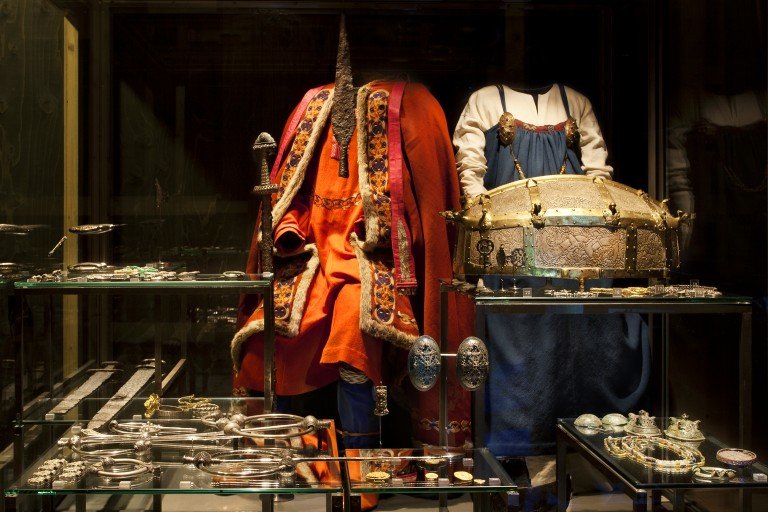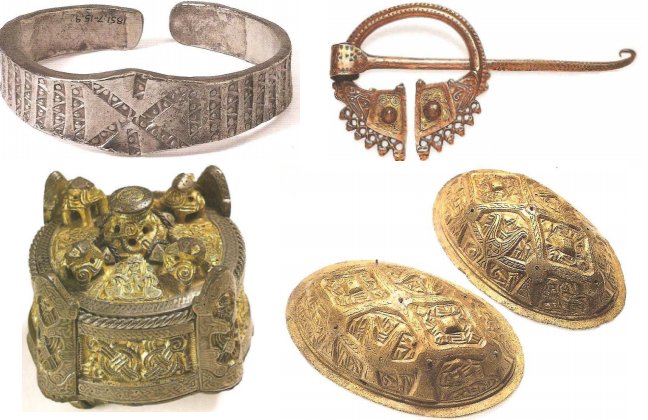Viking Fashion: Men And Women Were Vain And Very Clean During The Viking Age
Ellen Lloyd - AncientPages.com - There are many myths and misconceptions about the Vikings. One is that they were dirty and did not pay attention to their appearance. Few things can be further from the truth. Archaeological discoveries reveal that Vikings were cleaner than most and rather vain.
Credit: IMDb - Fair use
Personal Hygiene Was Very Important To Vikings
Scientists have discovered tweezers, combs, razors, nail cleaners, ear cleaners, and toothpicks inside Viking tombs. These artifacts show that people of the Viking Age took great care in personal grooming.
In his chronicle from 1220, John of Wallingford described the Vikings as well-groomed heartbreakers.
"They had also conquered, or planned to conquer, all the country's best cities and caused many hardships for the country's original citizens, for they were - according to their country's customs - in the habit of combing their hair every day, to bathe every Saturday, to change their clothes frequently and to draw attention to themselves by means of many such frivolous whims.
In this way, they sieged the married women's virtue and persuaded the daughters of even noble men to become their mistresses," Wallingford wrote.
Viking combs. Credit: Mariana Muñoz-Rodriguez
Bone pins, delicately carved from animal bone, were used to fasten clothing or as hair decorations. Vikings paid plenty of attention to their beards and hair. Bones and antlers were carved to create hair combs, which became prized possessions. Hair had to be styled right, and the beard could be short or long, but it was always well-groomed. Archaeologists have confirmed that several Viking combs were produced in Hedeby, a major trading center during the Viking Age.
Viking women, in most cases, had long hair tied into a knot on the back of the head. The knot was often decorated with colorful tape braided into the hair. The women also wore a bonnet or a scarf around their heads.
What Viking outfits looked like remains a mystery because knowledge of Viking fashion is based on fragments of clothes discovered in ancient tombs. Unfortunately, most Viking clothes have rotted away and disappeared when archaeologists excavated their tombs.
It is also important to remember that people living during the Viking Age never spoke of themselves as Vikings. To understand why ancient Scandinavians did not refer to themselves as Vikings, one must remember the meaning of the word Viking. In Old Norse, an old Scandinavian language, the word appears as "vikingr", which designates a person, while "viking" designates a practice. Therefore, it is better to say there are some things we do know about Viking Age fashion.
Our knowledge about Viking fashion is based on artifacts discovered in ancient tombs. National Museum of Denmark
Scientists have successfully produced clothes our ancestors wore by analyzing archaeological finds of textile tools, textiles, skins, and fibers from graves and settlements. For example, Viking Age women usually wore long dresses or skirts that went down to the feet. These dresses were held together with a strap over each shoulder. Men wore the same materials as the women. The inner layer usually consisted of a linen kirtle—a long shirt the men pulled over their heads. On the outside, the typical Viking man wore a wool coat.
Reconstructed woman's and man's costumes from Well-dressed in the Viking Age. Credit: Charlotte Rimstad
Like today's men, Viking men wore trousers. These could be either short or long, and they were usually sewn in the style of pantaloons. These trousers only reached down to the men's knees.
Vikings Loved Colors - Especially Blue And Red
Men usually wore a hat, whereas women could choose between a small hat and a scarf. What has also been discovered is that Vikings loved various colors. The most popular ones were blue and red.
Vikings were also familiar with luxuries such as silk and sewn-on ribbons with silver and golden threads. However, only a few elite members could wear these exclusive fabrics, which were imported worldwide.
Ancient Viking jewelry. Credit: Fitzhugh, William W. - Vikings: The North Atlantic Saga
Astonishing Norse jewelry discovered in hoards and burial sites reveals that Vikings were highly skilled craftsmen. Viking jewelry was beautifully made, and it's still reproduced today.
Vikings certainly paid great attention to beautiful garments and accessories. Based on all these archaeological findings, it's fair to say that Vikings were by no means badly dressed and dirty.
Written by Ellen Lloyd - AncientPages.com
Copyright © AncientPages.com All rights reserved. This material may not be published, broadcast, rewritten or redistributed in whole or part without the express written permission of AncientPages.com
More From Ancient Pages
-
 Bouboulina: Heroine, Wealthy Widow And Shipowner Who Commanded A Greek Fleet Against The Ottoman Empire
Featured Stories | Aug 30, 2019
Bouboulina: Heroine, Wealthy Widow And Shipowner Who Commanded A Greek Fleet Against The Ottoman Empire
Featured Stories | Aug 30, 2019 -
 Beginning Of Fashion – Paleolithic Eyed Needles And Evolution Of Dress
Archaeology | Jun 29, 2024
Beginning Of Fashion – Paleolithic Eyed Needles And Evolution Of Dress
Archaeology | Jun 29, 2024 -
 Oldest Fossil Human Footprints In North America Confirmed
Archaeology | Oct 6, 2023
Oldest Fossil Human Footprints In North America Confirmed
Archaeology | Oct 6, 2023 -
 Ancient Viking Age Music Recreated – This Is What It Sounds Like
Featured Stories | Sep 20, 2020
Ancient Viking Age Music Recreated – This Is What It Sounds Like
Featured Stories | Sep 20, 2020 -
 On This Day In History: Shakespeare’s King Lear Performed Before The Court Of King James I – On Dec 26, 1606
News | Dec 26, 2016
On This Day In History: Shakespeare’s King Lear Performed Before The Court Of King James I – On Dec 26, 1606
News | Dec 26, 2016 -
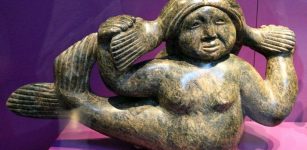 Sedna: Inuit Goddess Sacrificed By Selfish Father Fearing For His Own Life
Featured Stories | Jan 7, 2020
Sedna: Inuit Goddess Sacrificed By Selfish Father Fearing For His Own Life
Featured Stories | Jan 7, 2020 -
 Skull Reveals Little Foot Was Capable Of Different Head Movements Than Modern Humans
Human Beginnings | Mar 25, 2020
Skull Reveals Little Foot Was Capable Of Different Head Movements Than Modern Humans
Human Beginnings | Mar 25, 2020 -
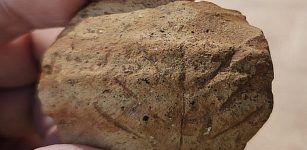 Intriguing Fragment Of A Byzantine-Era Jar Handle, Dating Back Approximately 1500 Years – Unearthed
Archaeology | Sep 5, 2023
Intriguing Fragment Of A Byzantine-Era Jar Handle, Dating Back Approximately 1500 Years – Unearthed
Archaeology | Sep 5, 2023 -
 Shipboard Cannon Found On The Swedish West Coast May Be Europe’s Oldest!
Archaeology | Sep 12, 2023
Shipboard Cannon Found On The Swedish West Coast May Be Europe’s Oldest!
Archaeology | Sep 12, 2023 -
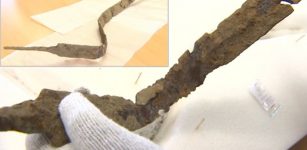 Rare 2000-Year-Old Celtic Sword Unearthed In East Bohemia
Archaeology | Sep 15, 2020
Rare 2000-Year-Old Celtic Sword Unearthed In East Bohemia
Archaeology | Sep 15, 2020 -
 Choctaw Indians’ Legend Of Nanih Waiya Cave Mound – Mysterious Underground Realm Of Their Ancestors And Their Battle With Giants
Featured Stories | Aug 3, 2017
Choctaw Indians’ Legend Of Nanih Waiya Cave Mound – Mysterious Underground Realm Of Their Ancestors And Their Battle With Giants
Featured Stories | Aug 3, 2017 -
 Old Cannon Found At Construction Site
Archaeology | Apr 22, 2020
Old Cannon Found At Construction Site
Archaeology | Apr 22, 2020 -
 Adorable Village Of The Little People In Connecticut
Featured Stories | Jul 25, 2019
Adorable Village Of The Little People In Connecticut
Featured Stories | Jul 25, 2019 -
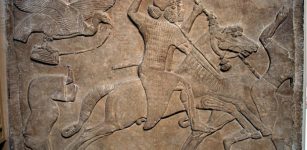 Invention Of Ancient Military Technologies Throughout World History Investigated
Archaeology | Oct 23, 2021
Invention Of Ancient Military Technologies Throughout World History Investigated
Archaeology | Oct 23, 2021 -
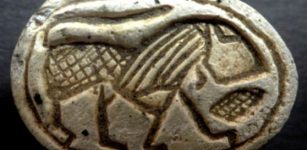 A Scarab Seal At Tel Gerisa, Depicts Walking Lion – Symbol Of Strength, Power And Authority
Archaeology | Sep 5, 2023
A Scarab Seal At Tel Gerisa, Depicts Walking Lion – Symbol Of Strength, Power And Authority
Archaeology | Sep 5, 2023 -
 Life Of Earliest Modern Humans In Europe Revealed By Excavations Conducted In Romania
Archaeology | Aug 24, 2022
Life Of Earliest Modern Humans In Europe Revealed By Excavations Conducted In Romania
Archaeology | Aug 24, 2022 -
 Vimanas – Flying Machines Soaring Through Ancient Sky Of India
Featured Stories | May 27, 2014
Vimanas – Flying Machines Soaring Through Ancient Sky Of India
Featured Stories | May 27, 2014 -
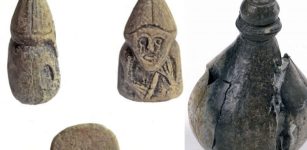 Old Norse Settlers Traded Walrus Ivory With Kyiv – Spectacular Archaeological Finds Reveal
Archaeology | Jun 16, 2022
Old Norse Settlers Traded Walrus Ivory With Kyiv – Spectacular Archaeological Finds Reveal
Archaeology | Jun 16, 2022 -
 On This Day In History: Vädersol Painting Depicting ‘Sun Dog’ Phenomenon Observed Over Stockholm – On Apr 20, 1535
News | Apr 20, 2016
On This Day In History: Vädersol Painting Depicting ‘Sun Dog’ Phenomenon Observed Over Stockholm – On Apr 20, 1535
News | Apr 20, 2016 -
 What Was Life Like For Children In Ancient Athens?
Ancient History Facts | Jul 4, 2018
What Was Life Like For Children In Ancient Athens?
Ancient History Facts | Jul 4, 2018



